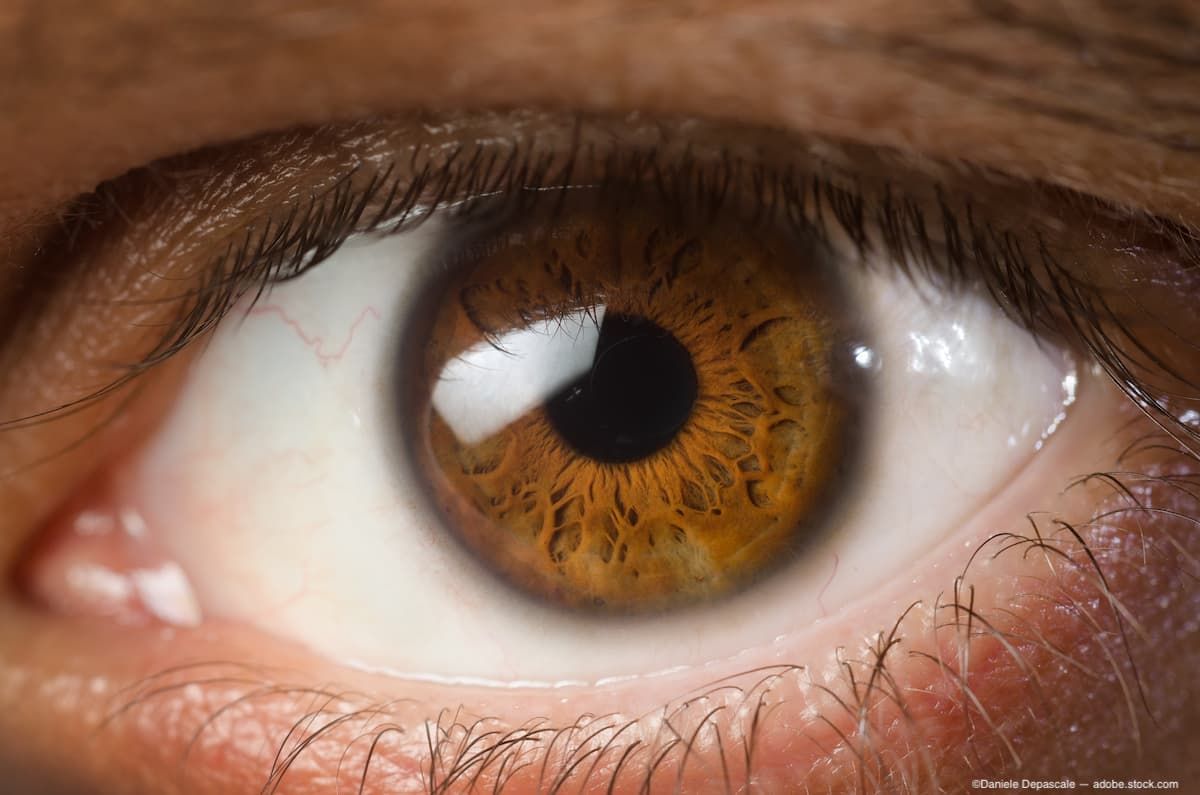Macular retinal detachment development associated with myopic foveoschisis
Without treatment, severe visual impairment can occur; the first-line treatment for these cases is anti-vascular endothelial growth factor therapy (VEGF).
Without treatment, severe visual impairment can occur; the first-line treatment for these cases is anti-vascular endothelial growth factor therapy (VEGF). (Image Credit: ©Daniele Depascale - Adobe.Stock.com)

Myopic choroidal neovascularization (CNV) and myopic tractional maculopathy are serious complications of pathologic myopia and the former has been reported in from 5% to 10% of eyes with high myopia.1,2 Without treatment, severe visual impairment can occur; the first-line treatment for these cases is anti-vascular endothelial growth factor therapy (VEGF).
Researchers from the Department of Ophthalmology, Osaka University Medical School, Osaka, Japan, led by Kaori Sayanagi, MD, PhD, reported 3 cases of myopia foveoschisis around myopic CNV, a rare event, that followed 3 different clinical courses visualized using swept-source optical coherence tomography (SS-OCT).3
They explained that myopic foveoschisis also is one manifestation that can occur under the general term myopic tractional maculopathy.
Cases of myopic foveoschisis
Patient 1, a 69-year-old woman, had an axial length of 29.71 mm, myopic CNV, and myopic foveoschisis in the left eye. She was treated with intravitreal ranibizumab (IVR) (Lucentis, Genentech), and 1 month later a macular retinal detachment expanded. Following vitrectomy and gas tamponade during month 2; the macular retinal detachment and myopic foveoschisis resolved gradually.
Patient 2, a 54-year-old man, had an axial length of 30.59 mm, myopic CNV, and myopia foveoschisis in the right eye. after IVR, a macular retinal detachment developed and expanded gradually until month 4; the retinal detachment and myopic foveoschisis resolved spontaneously during month 8.
Patient 3, a 66-year-old woman ahd an axial length of 28.63 mm, myopic CNV, and MF in the left eye. A macular retinal detachment expanded 1 month after a previous vitrectomy performed to treat the myopic foveoschisis. After intravitreal aflibercept (Eylea, Regeneron), the macular retinal detachment and myopic foveoschisis resolved gradually in month 12.
The 3 cases had CNV accompanied by subretinal fluid, and two of the three cases had outer lamellar holes.
Kaori Sayanagi, MD, PhD, lead researcher on the study conducted at Department of Ophthalmology, Osaka University Medical School, Osaka, Japan. (Image Courtesy of Kaori Sayanagi, MD, PhD)

Sayanagi and colleagues pointed out the commonalities among the 3 cases: all had myopic foveoschisis around the myopic CNV and an exacerbated macular retinal detachment during follow-up. They mentioned three hypotheses regarding the mechanisms:
Increased vitreous traction caused by anti-VEGF therapy. While the retinal detachment slowly resolved after VEGF therapy, the impact of anti-VEGF therapy cannot be excluded.
An outer lamellar hole. In addition to such previously reported cases,4 outer lamellar holes were observed in 2 of the 3 current cases.
Subretinal fluid accumulation. The fluid accumulates after splitting of the retina progresses to a macular retinal detachment and the fluid accumulation can disrupt the balance of centripetal and centrifugal traction, resulting in spontaneous progression of the myopic tractional maculopathy.
Management of these cases is not yet established because of the differing courses. The investigators advised close patient follow-up and consideration of emergent surgery if the macular retinal detachment is exacerbated. Attention then should be paid to the vitreoretinal relationship using SS-OCT. They believe that further investigation of this entity is warranted to determine appropriate management.
References
Ohno-Matsui K, Wu PC, Yamashiro K, et al. IMI pathologic myopia. Invest Ophthalmol Vis Sci. 2021;62:5.
Cheung CMG, Arnold JJ, Holz FG, et al. Myopic choroidal neovascularization: review, guidance, and consensus statement on management. Ophthalmology. 2017;124:1690–1711.
Sayanagi K, Hara C, Fukushima Y, et al. Three cases of macular retinal detachment exacerbated during follow-up with myopic foveoschisis around myopic choroidal neovascularization. Am J Ophthalmology Case Rep. 2023;32:101899; published online July 23.
Shimada N, Ohno-Matsui K, Yoshida T, et al. Progression from macular retinoschisis to retinal detachment in highly myopic eyes is associated with outer lamellar hole formation. Br J Ophthalmol. 2008;92:762–764.
Newsletter
Keep your retina practice on the forefront—subscribe for expert analysis and emerging trends in retinal disease management.